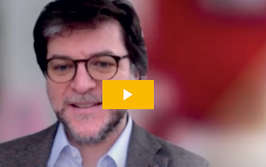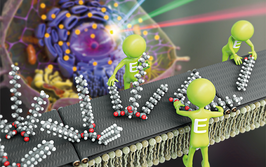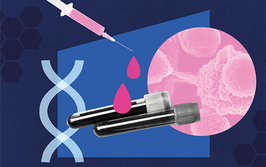
But You’re So Good with Patients!
Dispelling medical professionals’ misconceptions about pathology
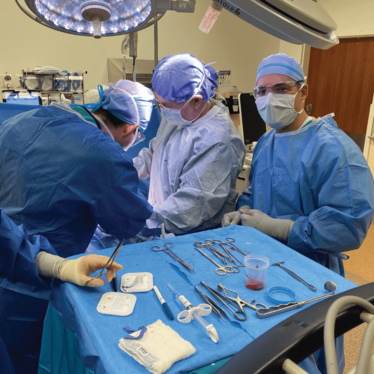
Cole scrubbed into a surgery.
“Oh no!” they cry.
“But you’re so good with patients!” they exclaim.
“What’s the point of doing things once they’re dead?” they joke.
“Don’t bother teaching that student; they want to go into pathology,” they say.
These phrases are familiar reactions to medical students who show an interest in pathology. For many reasons – some due to a lack of advocating for themselves, some because other physicians don’t fully understand our role – pathologists are probably the most misunderstood physicians in medicine. Even when you search “pathology” online, most hits are for “speech pathology,” which doesn’t help matters (no offense to speech pathologists). This often leaves pathologists and aspiring pathologists feeling like broken records as they clarify misconceptions surrounding their field of work and explain their central role in patient care.
Brilliant, hardworking students should not be deterred from pathology by archaic ideas that don’t truly represent the field. A student’s choice not to apply for pathology should be based on their interest in another field – not on the inaccurate stereotypes that have become too commonplace even among medical professionals. And students who do choose pathology should be encouraged to pursue their passion – not denigrated for it. Our goal is to raise pathology’s profile so that medical students are inspired and encouraged by their faculty and peers when they express an interest in the field.

Pathologists don’t like to socialize
This misconception is like claiming that a monk attends long meditation retreats because they do not enjoy the company of others. The analogy seems appropriate because both miss a large portion of the truth and tend to look at a situation through a rather negatively tinted lens. Medical students, physicians, and others commonly don these lenses when they find out that someone wants to be a pathologist. Those lenses miss the depth and richness of the field. The myopia hides the possibility that perhaps an aspiring pathologist cares so deeply about their future patients – and about medicine itself – that they want to study the root cause of disease processes at the cellular level.
Although it is important for medical students to understand whether they want to work directly or indirectly with their patients, we can assure you that those who choose diagnostic fields such as pathology or radiology care no less about patient contact. Though neither author is a monk, we can still imagine that their deep meditation practice and experiences attained while on retreat exponentially enhance their relationships with others after the retreat ends. The study of disease at the cellular level also significantly changes a pathologist’s view of medicine and their patients for the better. We contend that far more pathologists are drawn to the specialty by the magnetic pull of demystifying human ailments – examining cells, stains, and microscopic images of various disease processes – than by an opportunity to avoid patient contact. The intellectual and academic variety of pathology is its most exciting attribute.
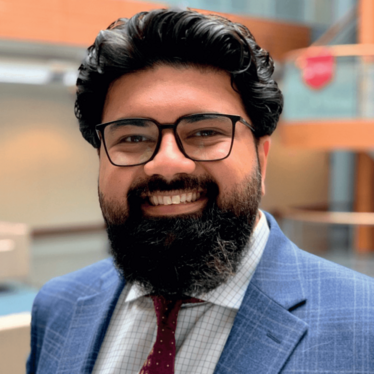
Kamran Mirza.
Pathologists prefer working with dead people; they want to do autopsies rather than treat the living
In medical school, Colton Biehl had the opportunity to be a part of an anatomy fellowship program in which he and a partner were assigned their own cadaver to dissect throughout the summer and use to teach other medical professionals anatomy. Their professor explained to them that these were their first patients. These patients donated their bodies to science so that students could better understand the intricacies of the human body and, one day, apply that knowledge to save another person’s life. These patients were shown the utmost respect and appreciation; at the end of the course, the medical school held a ceremony to honor all of these patients after the course was over and they were always shown the utmost respect and appreciation. Hundreds of students became more intelligent, more knowledgeable, and more compassionate people because of the experience of working with the dead.
Multiple preceptors have responded to Colton’s interest in pathology with two comments: “Really?” and “Oh, so you prefer working with dead people?” It is understandable to an extent that the word pathology often fires up the neural circuitry of morgues, autopsies, and the movie Concussion (thank you, Hollywood). After all, it is true that forensic pathologists are the doctors who conduct autopsies and determine the cause of death. It is also true that forensic pathologists do an extremely important job that provides emotional gratification and peace of mind to many families on a regular basis. It is not, however, true to say that all pathologists perform autopsies every day. Although autopsies are likely part of the training process in most pathology residency programs, they do not encompass the entirety of a pathologist’s training and specialization. It would be like saying to a medical student, “Oh, so you only want to study biochemistry?” Both responses indicate a lack of understanding of the training process. Medical students take biochemistry courses – but they also learn many other things. Pathologists are often trained to perform autopsies – but the field’s opportunities and specialties go far beyond death investigation alone.
Pathologists lack the social skills to be successful clinicians
Somehow, the idea persists that people only decide to spend their life pursuing pathology after realizing their clinical skills are inadequate and they just don’t have the social skills to compete in other fields. At that point, we just throw our hands up, buy ergonomic chairs, and accept the hand the universe has dealt us – pathology.
Or, in an alternate and more realistic universe, a medical student has a revelation on a quiet sunny afternoon during their dedicated Step 1 study period. That student thinks to themselves, “The past four hours I spent reading and studying Pathoma were really enjoyable. Understanding disease processes at the molecular and cellular level arms me with the information I need to help resolve these disease processes.” Colton, for instance, distinctly remembers going on a long walk with his wife and talking about his newfound love – pathology. Luckily, she wasn’t jealous of his new love affair and has supported Colton in his journey to becoming a pathologist ever since.
Perhaps pathology’s negative image comes from its assumed association with autopsies and cold, dark microscope rooms – but any trip to a pathology department will present a different image. Medical students will have the opportunity to interact with pathologists who are much warmer and friendlier than stereotypes would suggest. Spending time in the pathology department could replace words like “cold” and “detached” with ones like “approachable,” “knowledgeable,” “encouraging,” or “inspiring.”
Or perhaps the issue is that, during preclinical years, medical students are exposed to pathologists as teachers and not as clinicians. The latter only happens if students choose pathology electives in their third or fourth years of training. The lack of a universal clerkship cements negative notions of the specialty and most medical students never get the chance to make an informed decision about this field. Undertaking an elective in pathology would show medical students that, although much of a pathologist’s day-to-day work may be physically removed from the patient, the decisions and diagnoses that the pathologist comes to after concentrated effort has the most direct and personal impact on that patient’s life and treatment course. Undoubtedly, many practicing pathologists would have made outstanding clinicians in any number of other specialties – thanks to the same attention to detail, work ethic, love of learning, respect for medicine, and focus that has made them successful pathologists.
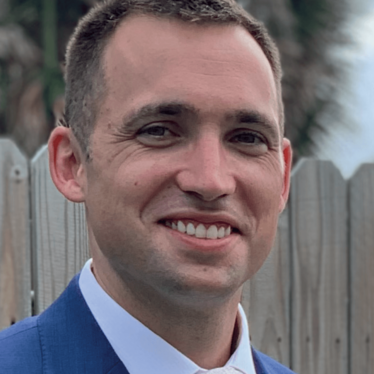
Colton Biehl.
Pathologists don’t care about their patients (or other people)
Ouch! This misconception is wrong on so many levels. The most successful counterargument to it is the fact that pathology, by definition, is the study of diseases and disease processes. Why would someone commit their life to understanding disease if they didn’t care about the people it affects? What excites us about pathology is that it equips us with the fundamental understanding of why a disease occurs; thus, if an adequate treatment does not yet exist, perhaps we can help develop one. Perhaps a medical student’s life was drastically affected in early childhood by losing a loved one to cancer and they hope to help contribute to the body of knowledge and research effective therapies. The words written (or typed) by a pathologist carry an immense burden of responsibility – diagnosis, prognosis, and correct treatment all lie in the balance. Without this first step, there can be no healing.
Pathology’s draw is that it addresses the question of “why?” Pathologists – whether aspiring or practicing – want to get to the root causes of issues. We enjoy thinking about complex problems in life and science. For those interested in medical research, evolutionary biology, cell biology, the origin of life, or genetics, pathology seems like the ultimate answer to all of life’s curiosities. The entire field aims to answer the “whys” of a patient’s disease and provide their medical team with the appropriate information to resolve the issue.
We often think about medicine at various levels or planes. Imagine a microscope with various objective lens sets to examine a specimen – say 4x, 10x, 40x, and 100x. Different diagnoses will require different objectives to provide the right level of magnification for accurate diagnosis. Some disease processes can be diagnosed clinically at the “zoomed out” 4x objective level and don’t require lab work or imaging. Others require a much more magnified 100x look at the patient’s blood or tissue to see what is happening at the cellular level. Think of the various medical specialties as 4x or 10x levels of patient interaction. You’re analyzing the macroscopic manifestations of a disease process that is occurring at the cellular level. Pathology analyzes the microscopic level and sees what is happening below the field of view of the naked eye. Tissue diagnosis is the gold standard.
(Of course, this is not to disparage any other field of medicine; the 100x view is not superior to the 4x view, but is better suited to certain diagnoses.)
We pathologists prefer to interact with our patients on the 100x level. We see patients every day in the laboratory – their cells, their tissue – and we apply all of our effort, training, and mindful concentration to each slide in hopes of providing an accurate answer that can guide their treatment. We don’t care less about our patients; we care so deeply about them that we are willing to spend as much time as it takes at the 100x level to make the proper diagnosis. Before medical students decide which specialty best suits them, they first should establish on which level or plane they desire to interact with their patients. We, personally, prefer the 100x plane.
Only introverted physicians can find fulfillment in pathology
It is important for medical students to understand themselves and to factor that knowledge into their residency decision equation. Not all pathologists are introverts – and the notion that pathologists hide in ivory towers with their microscopes should be discarded. Much of a pathologist’s day is actually spent interacting with other members of the medical professional team – and though we may not spend our entire day interacting with patients, the illusion that we don’t interact at all is simply not true. We believe that any medical student can look at the bigger picture, see the vital role of the pathologist, and consider joining the profession an honor equal to joining surgery or medicine.
Imagine the time an author spends in solitude and deep thought to produce a book that can forever change someone’s life. Similarly, a pathologist’s concentrated effort in the quiet of a laboratory corner can provide an accurate diagnosis to a patient that forever changes the course of their life. We don’t think of novelists as “cold” or “uncaring” – so why apply those labels to pathologists?
Fourth-year medical student at Nova Southeastern University Dr. Kiran C. Patel College of Osteopathic Medicine, Fort Lauderdale, Florida, USA.
Professor of Pathology and Director of the Division of Education Programs, Michigan Medicine, University of Michigan, Ann Arbor, Michigan, United States.

